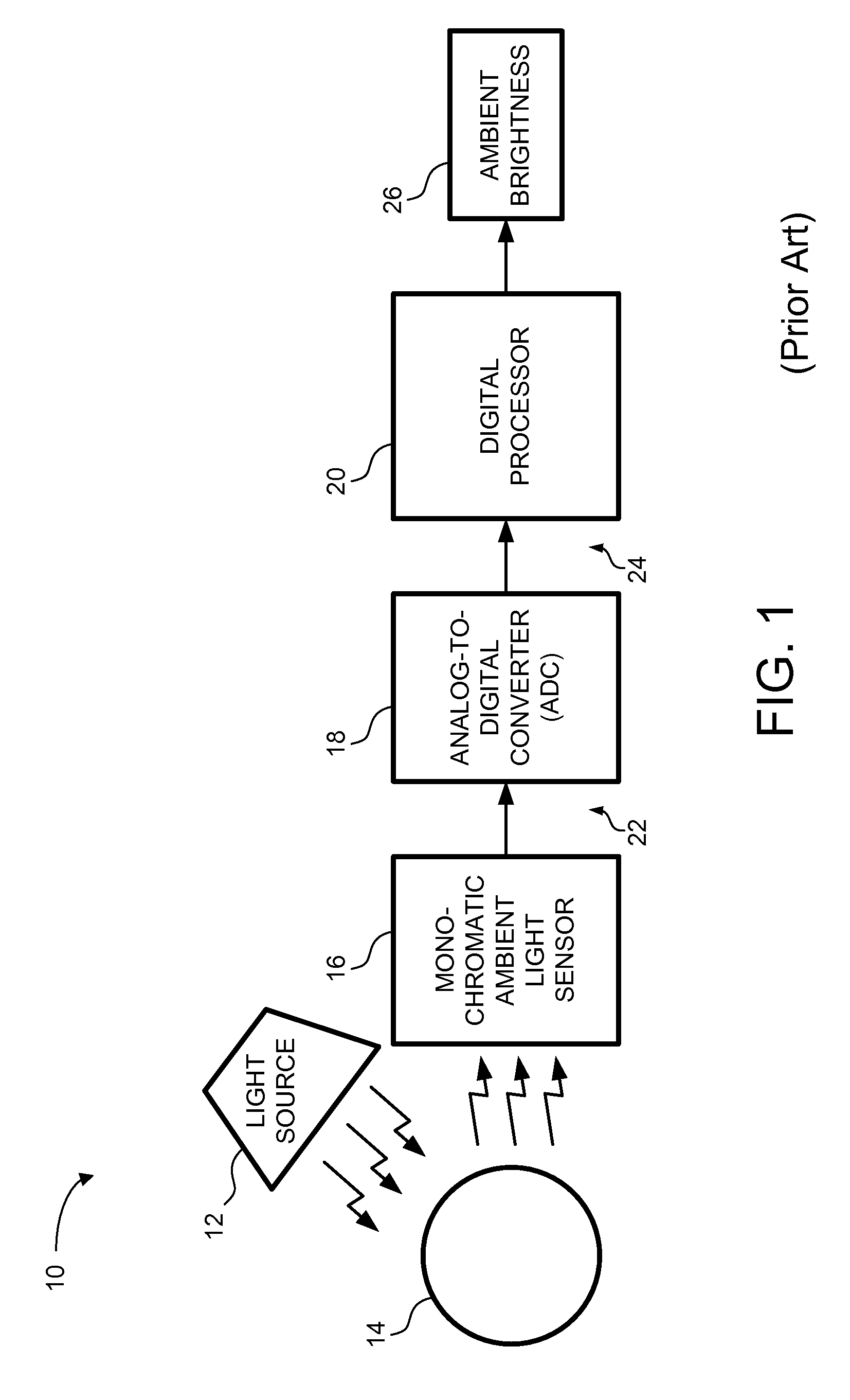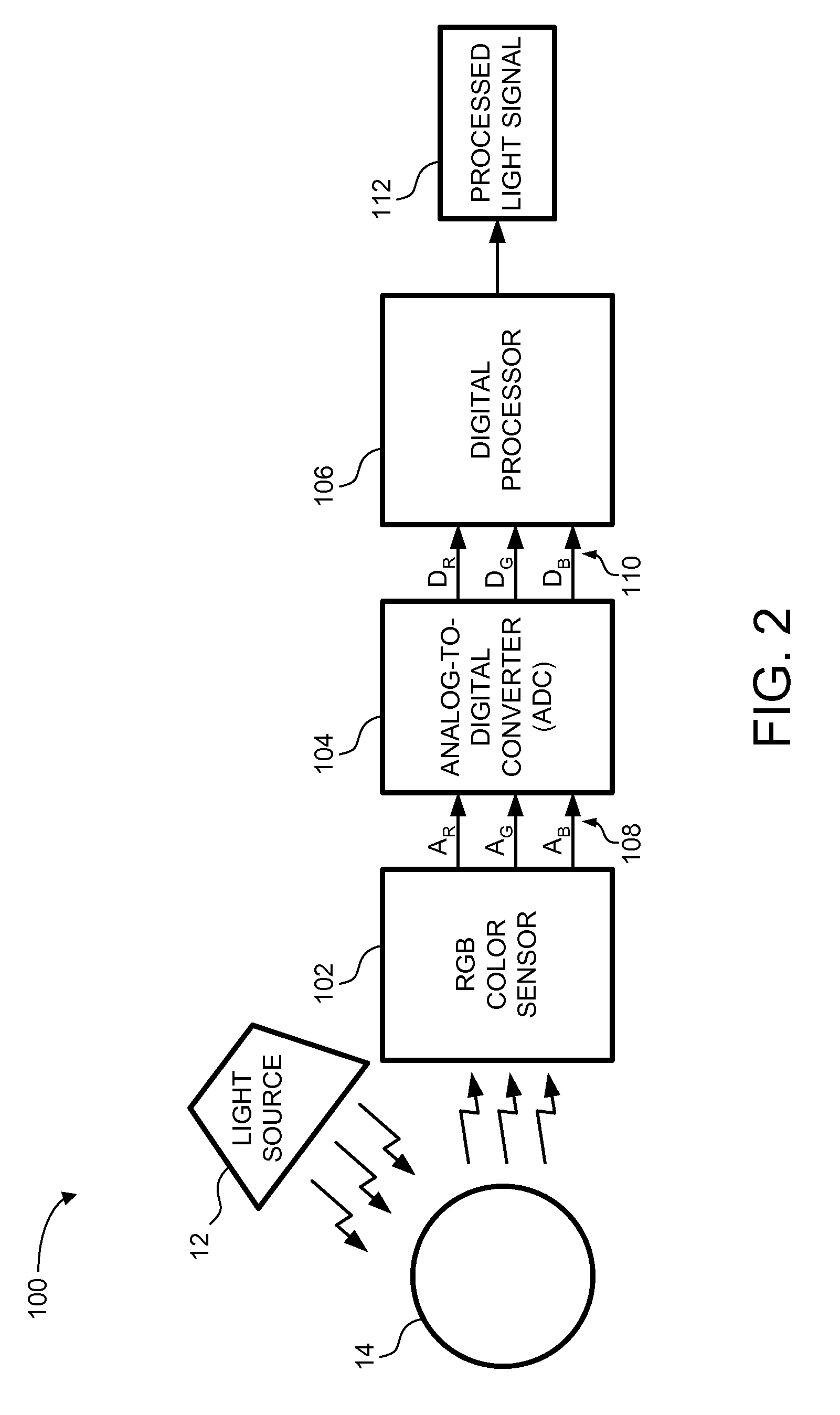Ambient light sensing using a color sensor
a color sensor and ambient light technology, applied in the direction of optical radiation measurement, instruments, spectrometry/spectrophotometry/monochromators, etc., can solve the problem that the conventional single-photodiode als system cannot detect color, the color temperature or light source type cannot be correlated, and the usefulness of the conventional als system is limited to only brightness compensation
- Summary
- Abstract
- Description
- Claims
- Application Information
AI Technical Summary
Benefits of technology
Problems solved by technology
Method used
Image
Examples
Embodiment Construction
[0020]FIG. 2 depicts a schematic diagram of one embodiment of an ambient light sensor (ALS) system 100 which uses polychromatic color sensor 102. More specifically, the depicted ALS system 100 includes an ambient light source 12, an illuminated object 14, the polychromatic color sensor 102, an analog-to-digital converter (ADC) 104, and a digital processor 106. In general, the polychromatic color sensor 102 receives a light signal either directly or indirectly from the ambient light source and generates a plurality of analog sensor signals. The polychromatic color sensor 102 sends the analog signals to the ADC 104 via one or more analog lines 108. The ADC 104 converts the analog signals to digital signals and sends the digital signals to the digital processor 106 via one or more digital lines 110. The digital processor 106 processes the digital signals and generates a processed light signal 112. Different types of processed light signals 112 are described in more detail below.
[0021]I...
PUM
 Login to View More
Login to View More Abstract
Description
Claims
Application Information
 Login to View More
Login to View More - R&D
- Intellectual Property
- Life Sciences
- Materials
- Tech Scout
- Unparalleled Data Quality
- Higher Quality Content
- 60% Fewer Hallucinations
Browse by: Latest US Patents, China's latest patents, Technical Efficacy Thesaurus, Application Domain, Technology Topic, Popular Technical Reports.
© 2025 PatSnap. All rights reserved.Legal|Privacy policy|Modern Slavery Act Transparency Statement|Sitemap|About US| Contact US: help@patsnap.com



